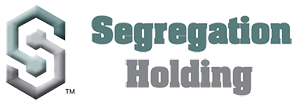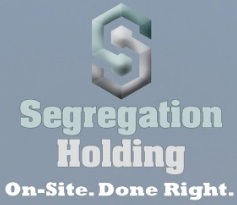Cost segregation studies are not all the same. For the purposes of this article, we will focus on acquired property, new construction and renovations or improvements.
Ideally, these cost segregation studies combine forensic engineering and accounting techniques to identify building costs that are properly allocable to tangible personal property (Section 1245) rather than real property (Section 1250). This could potentially allow you to accelerate depreciation deductions which reduce taxes and boosts cash flow considerably.
With the new rules and limitations for depreciation and expensing under the Trump-era Tax Cuts and Jobs Act (TCJA), the potential benefits are now much greater.
IRS rules generally allow businesses to depreciate commercial buildings over 39½ years or 27½ years for residential properties. Most often, a business will depreciate all of a building’s structural components like doors, walls, windows, HVAC, electrical, plumbing, and roofing as well as the whole building itself.
Personal business property such as furniture, fixtures and equipment (FF&E) is also eligible for accelerated depreciation, but usually over five or seven years. Land improvements including sidewalks, curbs, monument signage, fences, outdoor lighting and parking lots are depreciable over 15 years.
It is not unusual for businesses to classify most, if not all, of a building’s acquisition or construction costs to real property. They often overlook the opportunities to allocate costs to shorter-lived personal property or land improvements. As an example, computers and carpeting have obvious distinctions between real and personal property, but often the line between the two is less clear. Assets that appear to be part of a building may be personal property, like floor coverings, movable partitions, awnings and canopies, dedicated electrical or plumbing systems, window treatments, and decorative lighting to name a few.
There are some cases where real property serves more of a business function than a structural purpose and it may indeed qualify as personal property. These are considering “process-related” systems. These include reinforced flooring to support heavy manufacturing equipment, electrical or plumbing installations required to operate specialized equipment or dedicated A/C systems for telecommunication rooms or computer closets.
Although the relative costs and benefits of a cost segregation study are “facts and circumstances” based, it can be a valuable investment. Consider this – a business acquires an office building for $1,000,000 five years ago. If the entire purchase price is allocated to 39.5-year real property, the business is entitled to claim $24,610 (2.461% of the $1,000,000) in depreciation deductions the first year. However, a forensic cost segregation study may reallocate about 25% to five- & 15-year property (accelerated depreciation). This effectively increases the total available depreciation deductions to $147,142 in the current year because you receive 200%DB depreciation on the short-lived assets in addition to the straight-line depreciation from the building itself!
A cost segregation study can assist you in making partial asset disposition elections and deducting removal costs under the recently issued final tangible property regulations too!
Tax Reform and Cost Segregation
The Tax Cuts and Jobs Act (TCJA) enhanced certain depreciation-related tax breaks which may also enhance the benefits of a cost segregation study. Among other things, the TCJA permanently increased limits on Section 179 expensing. Section 179 allows you to immediately deduct the entire cost of qualifying equipment or other fixed assets up to specified thresholds.
Under Section 179 expensing, taxpayers can take a current deduction for the cost of qualified new or used business property placed in service in the tax year, though there are limitations. For 2018, the TCJA doubled the maximum Section 179 deduction, to $1 million, with a phaseout threshold of $2.5 million. For 2019, the deduction limit increases 2% to $1.02 million and the phaseout threshold rises to $2.55 million. Adjustments for inflation in future years are part of the TCJA.
The TCJA expanded 15-year-property treatment to apply to qualified improvement property. Previously, this tax break was limited to qualified leasehold-improvement, retail-improvement, and restaurant property. It also temporarily increased first-year bonus depreciation to 100% (from 50%).
If your business invested in depreciable buildings or improvements in previous years, it’s not too late to take advantage of a cost segregation study. A “look-back” cost segregation study allows you to claim missed deductions back to 1987. This can be a “cash” windfall!
To claim these tax benefits, a business must file IRS Form 3115, “Application for Change in Accounting Method,” with the IRS and claim a one-time IRC 481(a) “catch-up” deduction in the current tax year. Amended returns are NOT required.
Property Tax and Sales & Use Tax Implications
In most circumstances, a cost segregation study can be used to document the cost of tax-exempt property. This would be helpful, say, for manufacturers since many states exempt property used in manufacturing.
If your business decides to make changes based on a cost segregation study, please note that certain property may be treated differently for income tax and property tax purposes, and reporting mistakes can lead to double taxation. To avoid double taxation, be sure you have systems in place to track the costs of these items separately for income tax and property tax purposes.
Forensically prepared cost segregation studies will always yield substantial benefits when applied properly. This requires quality information at the beginning from the client and their tax advisors. Remember, garbage in – garbage out.
To find out whether a forensic cost segregation study will work for you, just share a little information with us and a cost seg specialist will prepare your personalized benchmark analysis of benefits. Click here.


